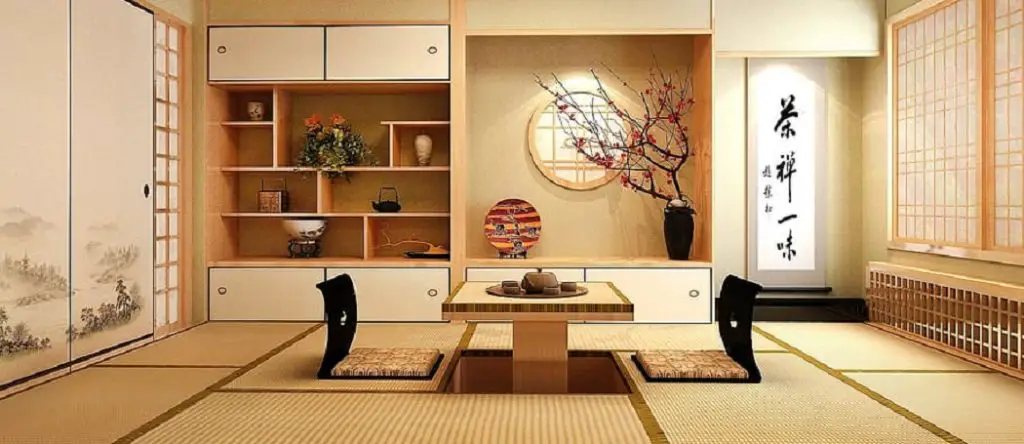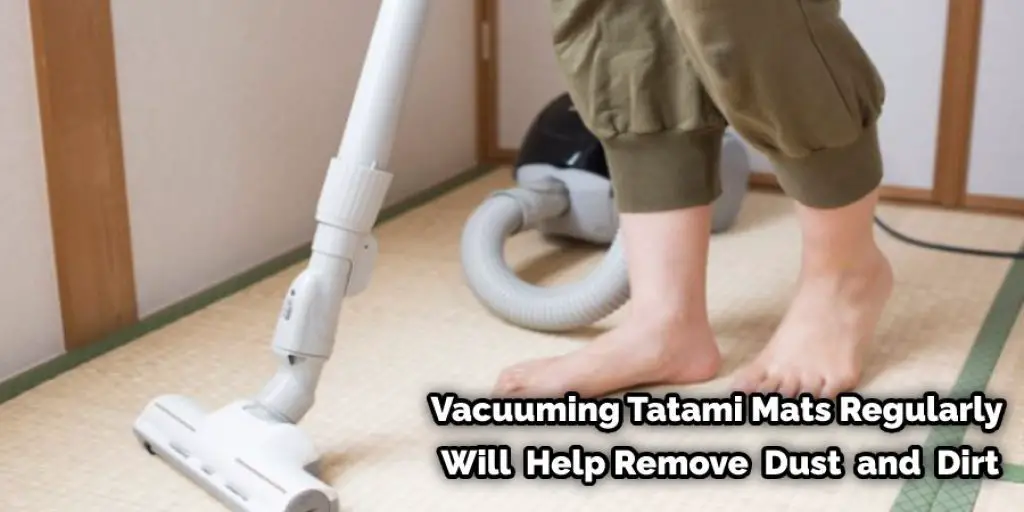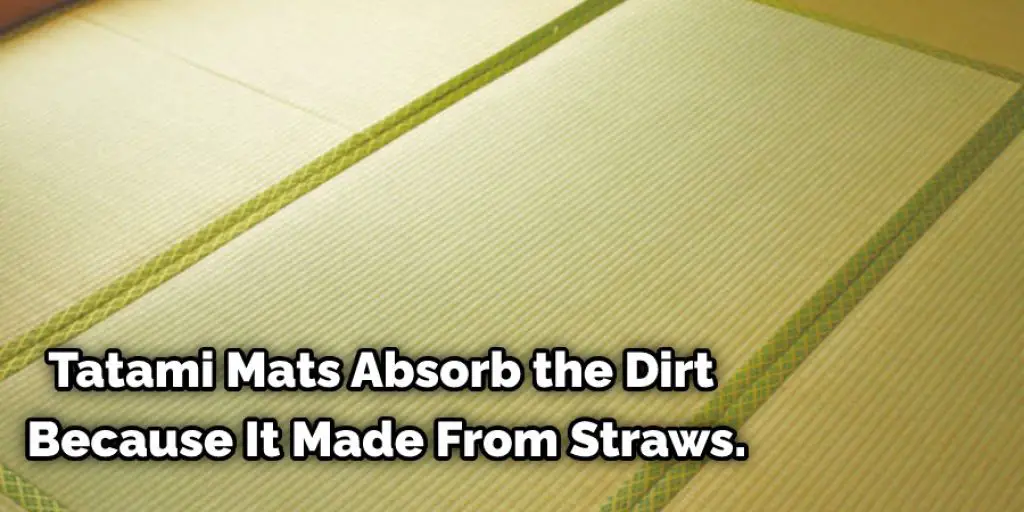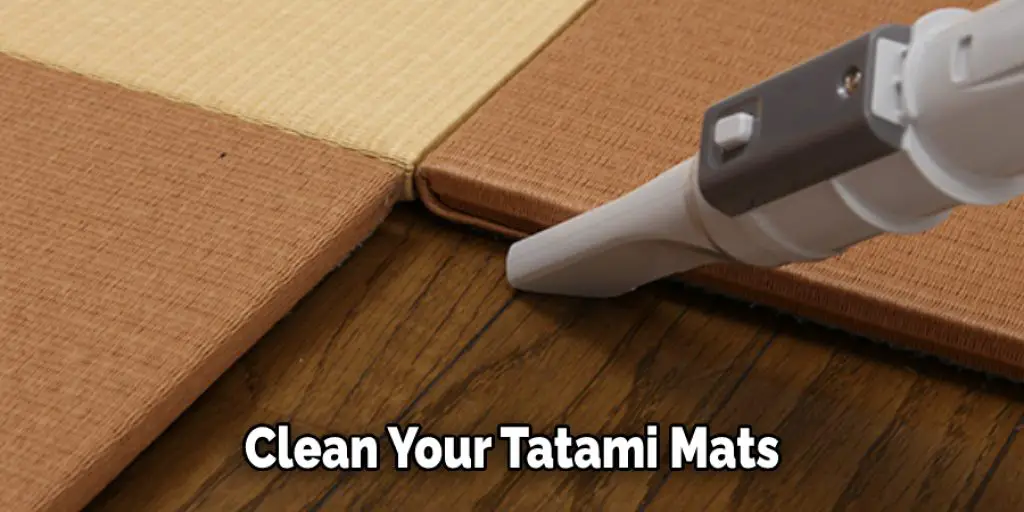Tatami mats are traditional Japanese flooring that can last for decades if taken care of properly. Unfortunately, most people do not realize this, and they will throw out their mat when it is dirty. The good news is that there are ways to keep your tatami mats clean and looking new even with heavy use!

To summarize: Tatami mats can be extremely durable if you know how to take care of them, but most people don’t bother doing anything about them until they’re already dirty and then end up throwing them away after only a few short years.
Keeping your tatami mats clean and cared for can make all the difference! This blog post will teach you how to clean tatami mats with natural ingredients!
7 Steps to Follow on How to Clean Tatami Mats
Step One: Determine What Kind of Mats You Have
First, you will need to determine what kind of tatami mats you have. This will help in how to clean tatami mats and whether or not you want to use a wet cleaning method or a dry cleaning method.
Step Two: Know When Mats Should be Dried After Cleaning
You will need to know when you should be drying your mats after cleaning. It is recommended that you clean them at least once a month, but it will depend on the amount of use and traffic they get.

Step Three: Spot Clean or Wash?
Decide if you want to spot clean or wash your tatami mats. If there are just a few stains, spot clean the mats. On the other hand, if they are filthy, it may be best to wash them. Also, keep in mind that tatami mats are not machine washer safe, so if you decide to wash them, they will have to be by hand.
Step Four: Vacuum Regularly
Vacuuming your mats regularly will help remove dust and dirt, which will decrease your need for cleaning in the long term.

Step Five: Use a Wet Cleaning Method
Wet cleaning is one way to clean your tatami mats if they are very dirty or stained. You can use either plain water or a mild detergent, but never use bleach on tatami mats.
Step Six: Dry Mats Thoroughly
When using the wet cleaning method, it is important to dry your tatami mats thoroughly afterward so that mold and mildew don’t grow on them. If you cannot let them dry outside, lay them out in a cool, well-ventilated room or a shady area.
Step Seven: Check Layers and Edges
When you are done cleaning, check the layers of your mats to see if they are still intact. Also, make sure there aren’t any loose or torn edges before putting them back down. This will help extend the life of your tatami mats.
Additional Tips After Cleaning Tatami Mats
After you clean your tatami mats, it is important to keep the following tips in mind:
- Close the door leading to the room where you have cleaned your mats. If possible, keep the door closed for a few days after cleaning, which will minimize dust from settling on them again.
- Wipe up all leftover water on wet areas of the mat with a clean cloth to prevent mold from forming. Mold is no fun at all.
- Wipe up any spilled water from untatami areas with a dry cloth to prevent mold from forming.
- Let the mats dry for at least 20 minutes before stepping on them. This allows for easier cleaning of your feet and shoes later. Tatami mat floors can become very slippery after washing, resulting in injury if you are not careful.
- Do not store the mats in direct sunlight for extended periods of time, as this can cause mold to form on them and damage your mat flooring.
If you follow these tips and precautions after cleaning your tatami mats, they will be in tip-top shape in no time!
Our Tatami Mats Easy to Clean?
Tatami mats are not something that’s easily cleaned, but it is possible. However, since these tatami floor mats are used outside or in a room filled with dust and dirt, it can be difficult to keep them clean. Tatami mats absorb the dirt because of the base material they’re made from; straws.

If you do not clean tatami mats regularly, the straws become weak and break. Therefore, the first step towards keeping tatami mats clean is to replace worn-out mats with new ones.
When should I Clean Tatami Mats?
Tatami mat cleaning should be done once every three months or when they start to look dirty. Depending on how often you use your tatami mats, clean them one or two times a year.
Just make sure not to wait long periods of time before cleaning them because that will shorten their life span. Also, you do not want to clean too often because that will damage them and make them look old and worn out before their time.
Do Tatami Mats Get Bugs?
Tatami Mats serve as a decent medium for bugs to live and breed because these mats are filled with organic materials that can be used as food for insects. The springs of a Tatami’s straw are also very suitable for many pests to survive on.
Tatami Mats also acts as an insulator home for termites and ants. Unfortunately, this makes Tatami Mats more vulnerable to pest infestation. It is exposed to their pheromones that signal many bugs on the mat, drawing them from a big radius around your house.
Frequently Asked Questions
What Happens if Tatami Gets Wet?
A tatami mat is an example of a Japanese flooring material, which is made from the fibers of the kenaf plant.
If It Gets Wet, Then There Are Some Things That You Can Do to Avoid Permanent Damage :
- The best thing to do is remove any water or moisture on the surface with a towel or paper towels and let it dry before placing it back down.
- You can use a damp cloth to remove any remaining moisture and let it dry before replacing again.
- If you have time, put it in your oven at 140 degrees Celsius for 10 minutes to dry off completely before placing back down again.
How Long Do Tatami Mats Last?
Tatami mats are made of a special type of woven straw that is resistant to decay and molds. It is made from wheat, buckwheat, or rice straw which is then woven into a mat.
The life span of tatami mats varies with how often they are used. For example, if the mat is not used for an extended period and is covered in dust, it can last for more than 10 years. However, if the mat is frequently being used or has moisture present on it (such as sweat), it may only last for about 5-6 years before needing to be replaced.

Can Tatami Mats Mold?
Tatami mats are a type of flooring material that can be found in many traditional Japanese houses. Tatami mats are made from straw and hemp, and they have been used for centuries.
There is no need to worry about tatami mat molding because they don’t absorb moisture or grow mold. The only time you should worry about tatami mat molding is if the mat has been soaked with water, which will cause it to break down.
Can You Flip Tatami Mats?
Yes, you can flip Tatami Mats.
The Process Is Not Difficult at All and Is as Follows :
- Measure the size of your Tatami Mat
- Choose a sturdy cardboard box that will fit the size of your mat
- Create a frame out of plywood or wood and secure it to the bottom of the box with screws
- Line up your Tatami Mat in the box so that it’s centered
Conclusion
The conclusion paragraph is informative and provides information on how to clean tatami mats. It also explains the benefits of cleaning them often. The tone of this blog post is professional but friendly, with a conversational style that will make readers feel like they are being instructed by their friend rather than reading an article written for professionals.
The concluding sentence emphasizes the importance of taking care of your tatami mat so it can last you longer. This language encourages people to take action because if they don’t, it could shorten the life span or even ruin their investment into buying one in the first place! Cleaning regularly not only makes sure your mat stays looking good but also helps keep dust, dirt, allergens, and other imps.
You may also like – How to wash floor mats in washing machine.








